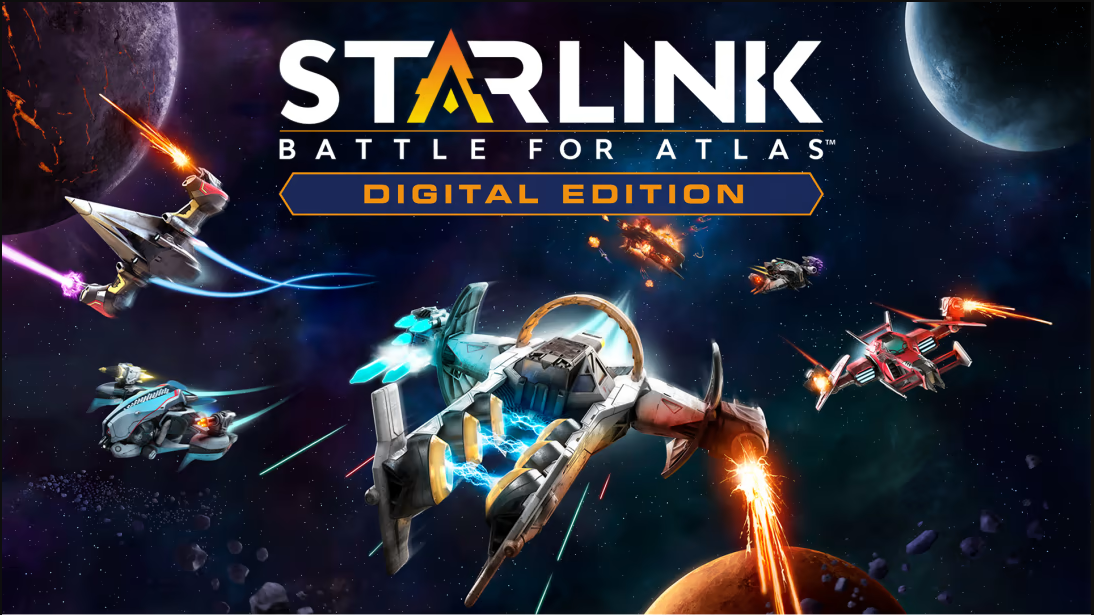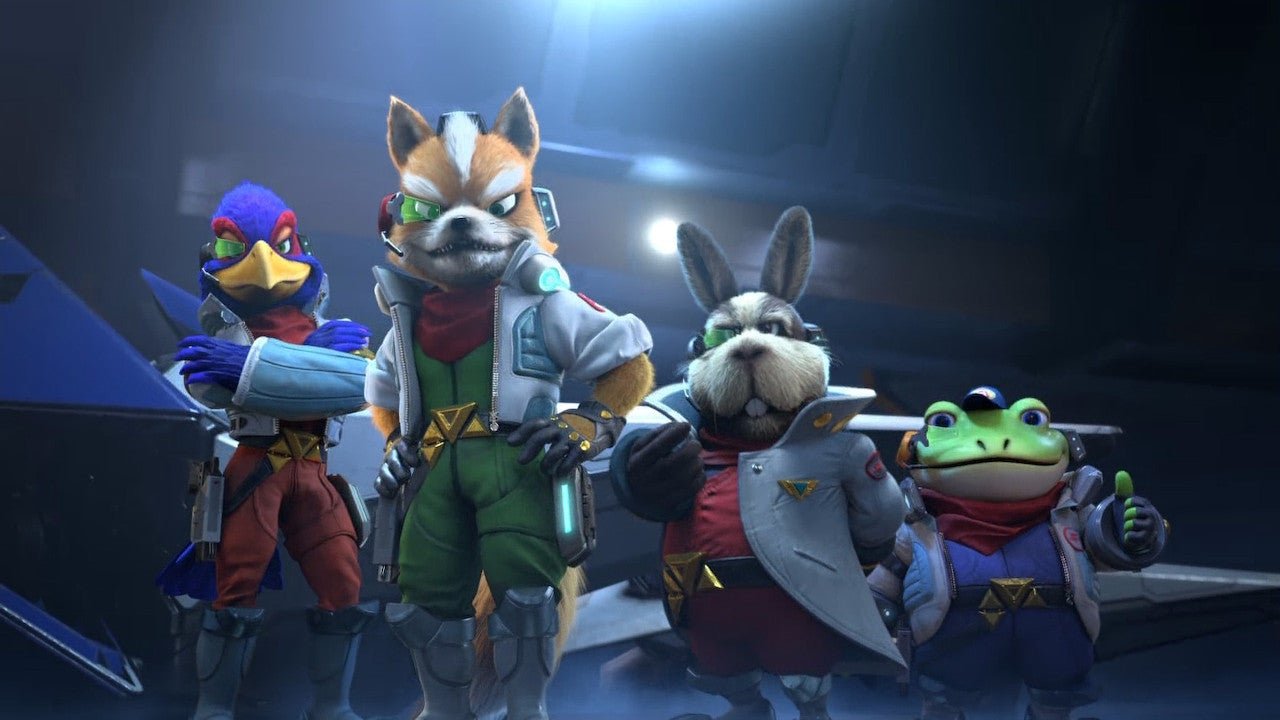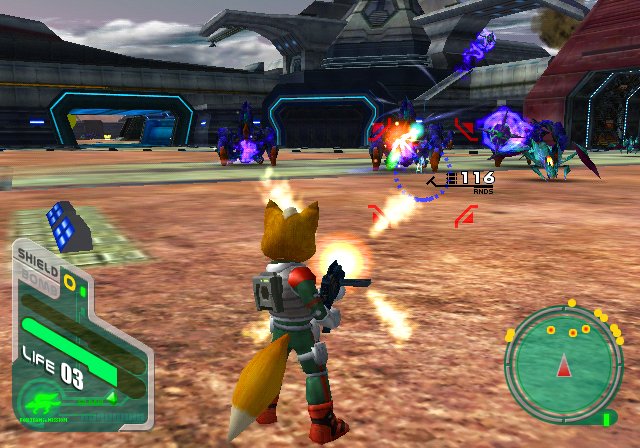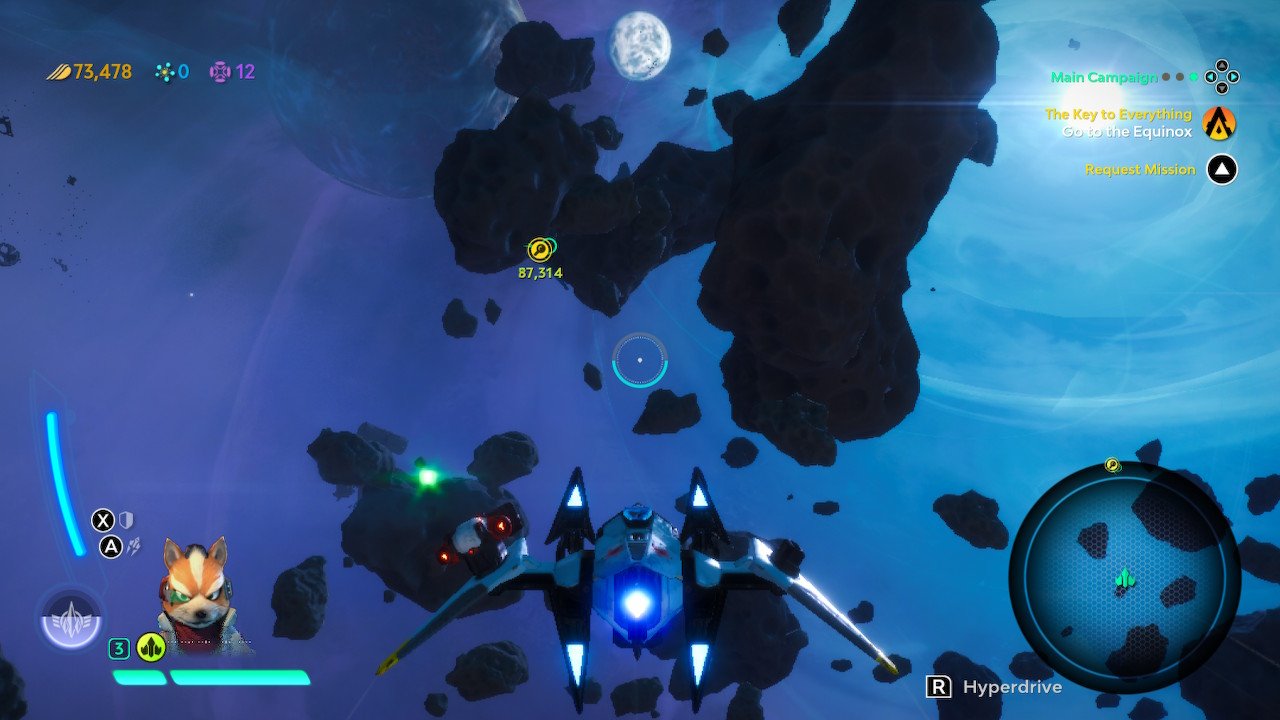Is Starlink: Battle For Atlas a Star Fox game?
In case you didn’t know, the entire Star Fox team appears in the Switch version of Ubisoft’s toy-to-life game, Starlink: Battle for Atlas (as does Star Wolf, for good measure). And it’s not just like they slapped a Fox McCloud icon in the menus and included Arwings as a vehicle option either; they have full-on integrated the Star Fox cast into the game’s story.
Fox and Company shows up in the game’s opening cinematic and the furry starfighter is playable for the entirety of the adventure. And these are the legitimate characters we know and love, faithfully rendered in cinematics and fully voiced by (at least seemingly) the real voice cast. It’s pretty shocking for a game that does not have Star Fox included in its versions on other platforms.
So this begs the question: Is Starlink on Switch actually a Star Fox game?
Unfortunately, I think the answer for me is probably ‘No’. However it really comes down to what you want in a Star Fox game. Because based on the various titles in the Star Fox series, you might be expecting some wildly different things.
The original Star Fox was an on-rails shooter, an evolution of games like Xevious, Space Harrier, or Captain Skyhawk. Star Fox 64 was mostly just the first game done over again, but with new characters, fully 3D dogfight segments, and new vehicles to pilot. By the GameCube era, Fox and his crew started branching out beyond space fighter jets. Star Fox Adventures played out more like a Zelda game, with Fox venturing almost entirely on foot and engaging in melee combat with a staff. It wasn’t originally conceived of as a Star Fox game at all, and it shows. Star Fox Assault then melded the tried and true vehicle piloting with plenty of new vehicle-less run-and-gun gameplay.
Star Fox 64 on Nintendo 64.
Star Fox Command on the DS was mostly a return to classic Star Fox gameplay, but with the inclusion of new strategy elements, and played using stylus controls. Star Fox 64 3D was, of course, a straight-up remake of the N64 game for the 3DS. Star Fox Zero on the Wii U was again more-or-less a remake of Star Fox 64, but this time with experimental (and apparently super awkward) aiming controls using the Wii U Gamepad. Finally Star Fox Guard was a tower defense spinoff.
Star Fox Assault on Nintendo GameCube.
Oh, and let’s not forget Star Fox 2, which was only just released in 2017 along with the SNES Mini Classic console. That game features full 360-degree rotation and freedom of movement, making it a “multidirectional shooter”. Though due to the limitations of the SNES, its framerate is quite bad.
Speaking for myself here, the thing I really want from a Star Fox game is space shooter gameplay, whether that’s on-rails or with fully 3D movement. Most importantly, the controls should be relatively simple and instantly intuitive, so that any player can jump right into it. (This, I suspect, is where Zero went so very wrong.) In the case of Starlink, I think they are very close to checking every box, but it falls just short.
Starlink: Battle for Atlas was created as a toys-to-life game, after all, so the original intention was to play this game using physical toy spaceships as part of the controls (Captain Power-style). And while you don’t need the toys to play the game, that original concept still influences the game on many levels. This is especially true of the game’s controls.
All vehicles in Starlink are piloted with twin-stick controls. Whether in space or flying along the surface of a planet, you use both the left and right sticks to direct your ship at all times. The result is what I would call “tank controls”; something which strikes me as a bit odd for the various spacecraft in the game, and especially weird for Fox’s Arwing. However, I can see how this setup makes sense for Starlink’s brand of open-world exploration, in which you have to go all over the place but can never exit the vehicle under any circumstances.
Basically every vehicle in the game drives like a hovercraft—as in an ACV (air-cushion vehicle) hovercraft—not like a fighter jet, or even like a helicopter. You scoot along the land or sea, able to move in any direction, strafing around targets, and the ship can even jump. Yes, that’s right—your spaceship won’t spend much time actually flying, but it can hopscotch along a planet’s surface with ease. You will freely explore each planet this way, collecting resources, physically picking up objects with a tractor beam and taking them somewhere else, and also occasionally engaging robots or whatever in combat.
Ironically, I think the twin-stick tank controls do work pretty well for space combat…at least eventually. It took me a little bit to get a handle on it. But once I did, space dogfights were actually pretty cool. On the ground however, these controls are just so far removed from a typical Star Fox game, I can’t see myself ever getting used to them. The Arwing just feels so grounded, it kind of destroys the fun for me.
With that said, I can see how Starlink’s toys-to-life origins resulted in this style of gameplay. The way your ship skims along the surface in any direction, able to jump and strafe circles around targeted opponents, it feels very true to how a kid would play with a toy spaceship. The movement possible here matches that of a kid swooping around their toy X-Wing or whatever. If you happened to be using a toy ship mounted onto your controller, I bet these controls would feel pretty intuitive. It’s just that they just don’t feel particularly Star Fox to me.
Controls and grounded gameplay aside, there is some genuine fun to be had with Starlink. The care that Ubisoft has taken to include the Starfox team is really impressive. Seeing Fox take prominence in cutscenes is a delight and playing through the quest to defeat Star Wolf is a nice touch. So while I can’t go so far as to declare that Starlink is a true Star Fox game, it is still probably worth playing for the Star Fox fans out there. (Especially if you can get the Digital Edition on sale for cheap.)








